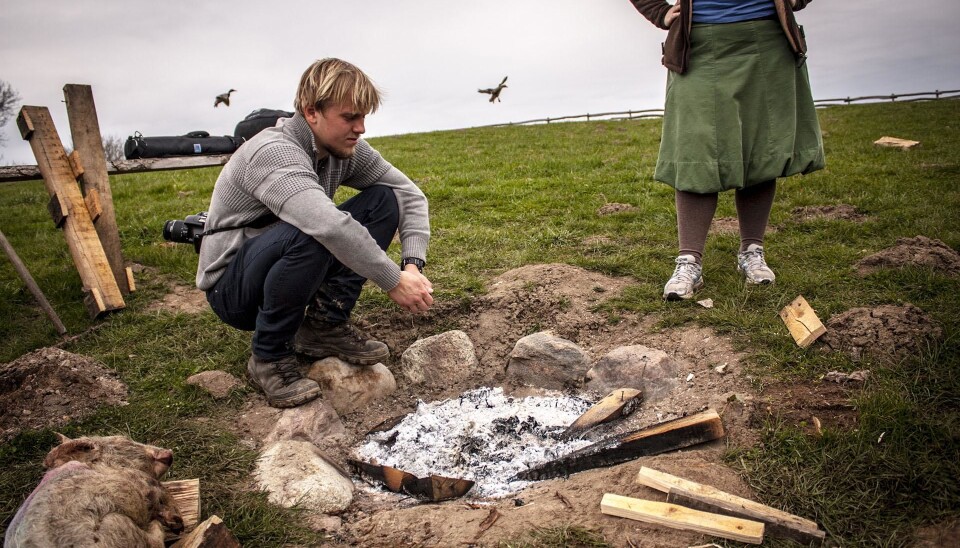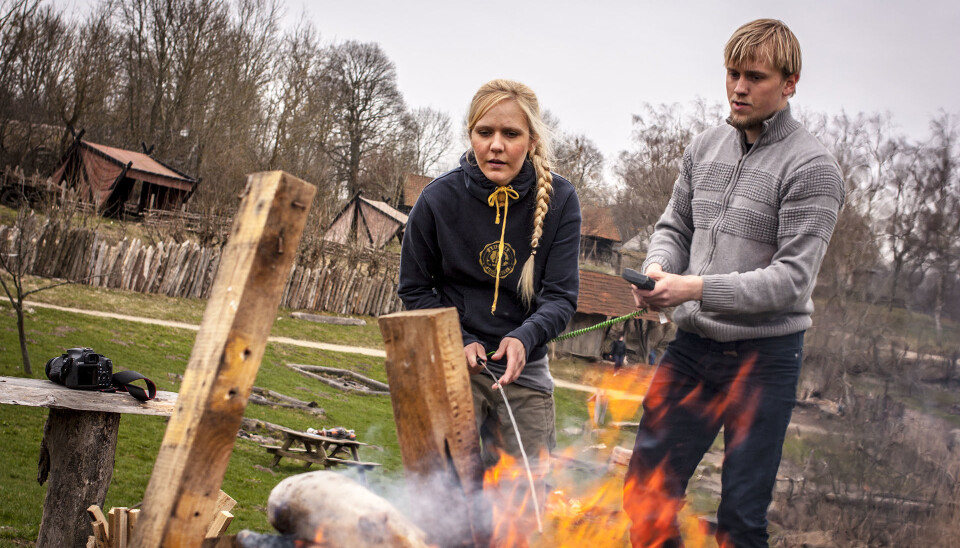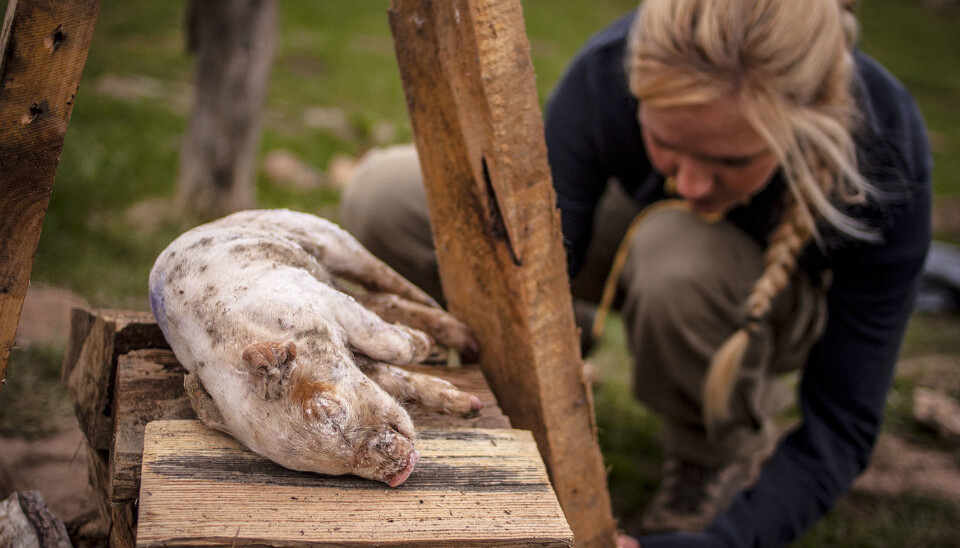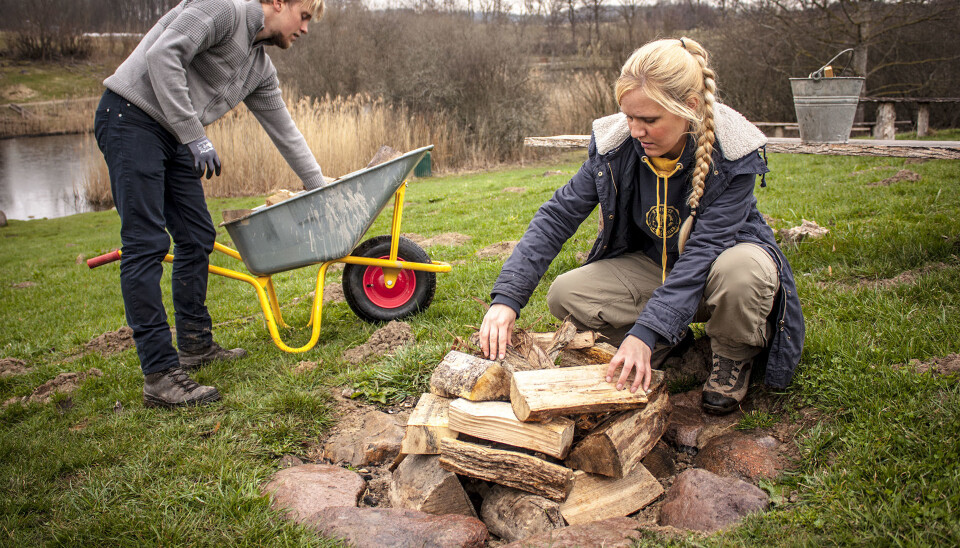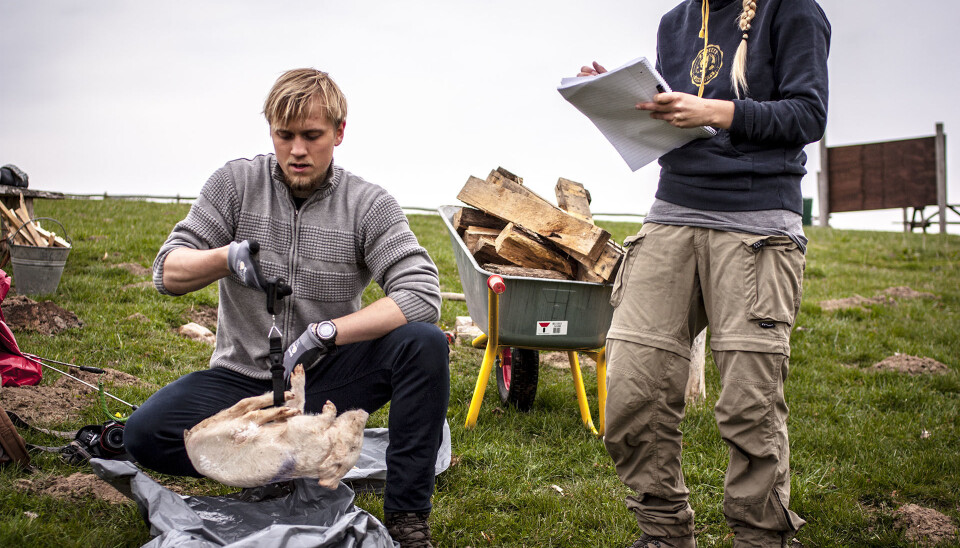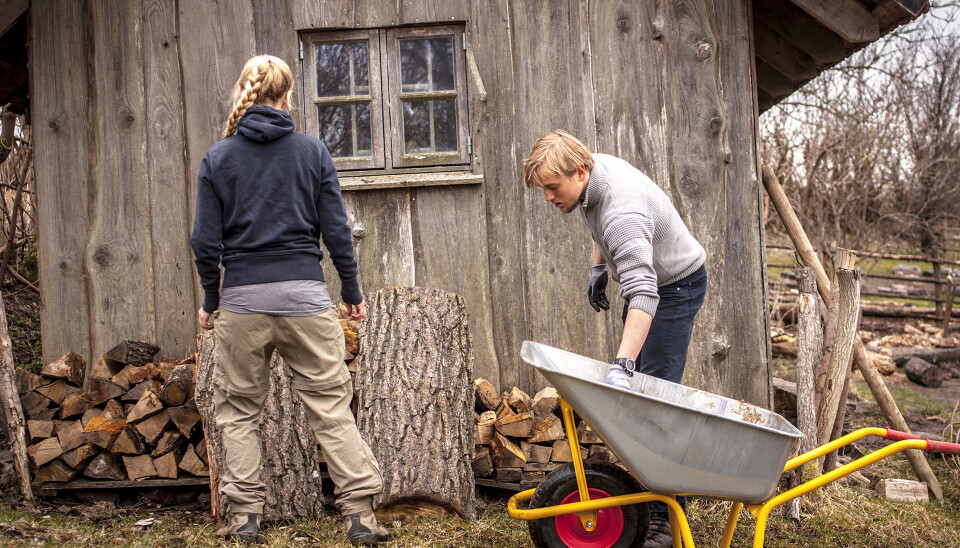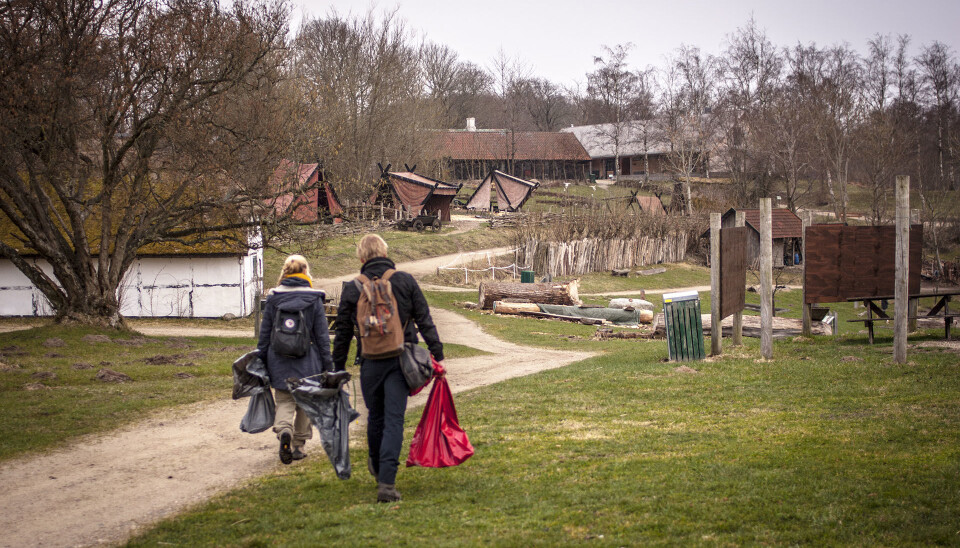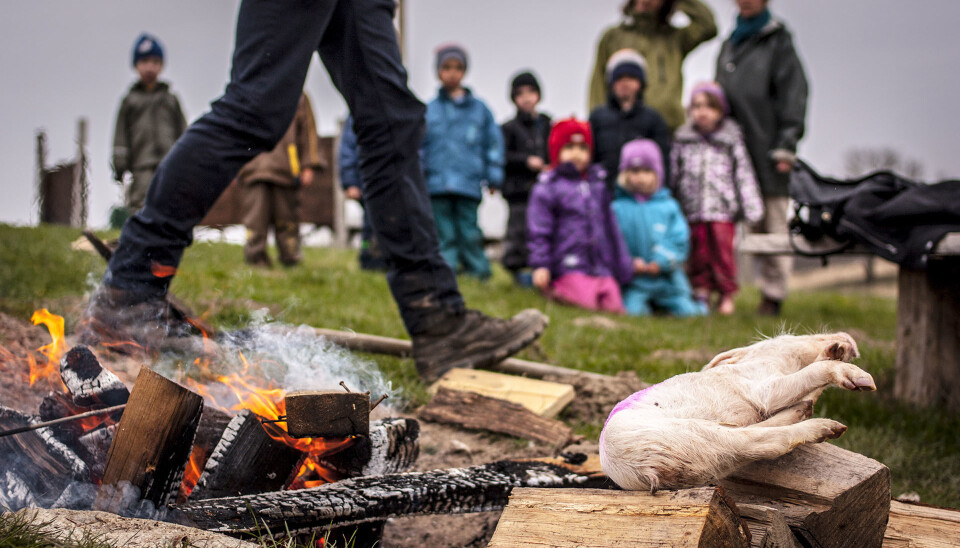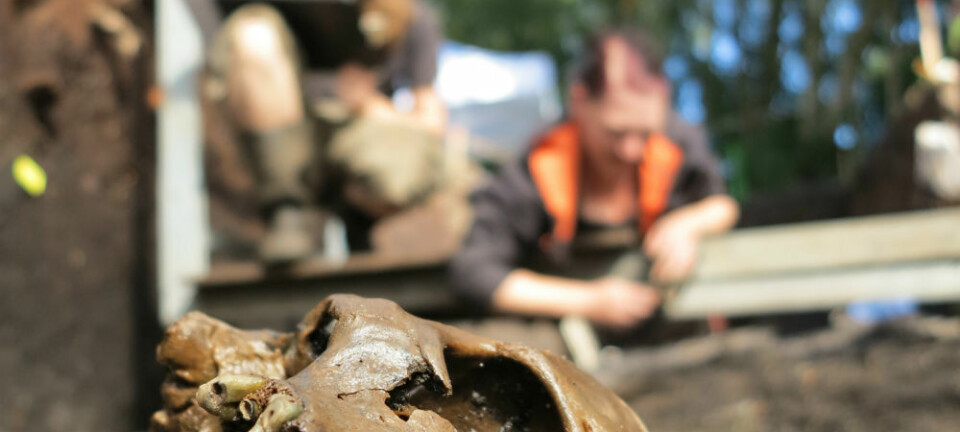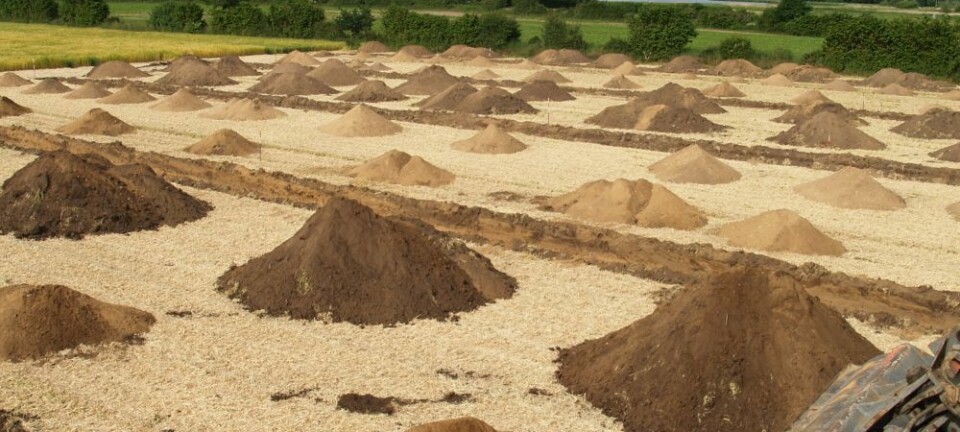Archeologists burn pigs to investigate historical mystery
Archeologists are puzzled by the fact that bone remnants from children and infants are almost never unearthed from ancient funeral pyre sites.
SAGNLANDET LEJRE, Denmark -- The burning piglet doesn’t smell as expected. It smells more like bonfire and this is slightly disappointing.
Jonas Jæger, archeology student at Copenhagen University, had been told it would smell like roasted pork or bacon “… and something disgusting later,” he says with a roguish grin in the direction of his fellow student Veronica Liv Johansen, busy documenting the ongoing experiment.
The olfactory anecdote stems from an older experimental archeologist who previously immolated fully grown pigs to investigate what happens with the bones after they’d been exposed to the tearing flames.
In principle it’s the same experiment happening right now with the only exception that the burning critter is just a piglet weighing in around 2,800 grams -- about the weight of an infant making it a good comparison to help answer a question shared by archeologists.
Infants have disappeared from history
Countless burial sites from early Bronze Age up until early Middle Ages have been discovered in Denmark and the uncovered bones, together with contents of urns, witness of a tradition of sending the dead off with funeral pyres. Even still, almost no remnants of small children and infants are discovered and this puzzles archeologists.
“They must’ve been there,” says Henriette Syrach Lyngstrøm, associate professor of archeology from the Saxo Institute, Copenhagen University.
She teaches experimental archeology to Jæger and Johansen and is with them today in Sagnlandet Lejre to observe their bonfire experiment.
“Of course, when we say that they must’ve been there, we’re basing it on an assumption from negative observations,” says Lyngstrøm. That’s archeologist for qualified guessing.
But archeologists know for certain that funeral fires were the tradition all the way from early Bronze Age to Christianity’s entry in Denmark. It is also a fact that the mortality rate amongst infants was very high until recent modern times and that is why it’s a mystery why traces of these infants are almost never found -- the best preserved infant corpse revealed only the enamel of three teeth and a single bone.
Bones might burn to dust
One of the theories is that the infant bones haven’t fully developed and are so small they become consumed in the fire.
This is what Jæger and Johansen are trying to investigate with their experiment.
Jæger has a personal fascination with the tradition around funeral pyres and with Johansen in on the idea, they put their heads together to find an original angle on something involving fire.
“That’s when we thought of infants,” says Jæger.
But burning infants is not possible and that is why the choice fell on our anatomically distant cousins, the pigs.
For the occasion Jæger and Johansen have collected three little dead piglets varying in size -- the largest weighing more than five kilograms.
Their experiment is not aimed at a specific time era, rather it is applicable to all and serve more so as a general study in structural stability of infant bones. As so, the experiment gathers interest outside of archeology. Later, a forensic anthropologist will also examine the burnt bones; they might aid in future criminal investigations.
Thousand years make bones go to ground
The first piglet is almost reduced to ash and left is only the spine, a single femur and half the skull. Everything else is white powder.
“It’s going to be a very meticulous job tomorrow,” notes Jæger looking at the still diminishing remnants of the pig.
Heat from the flames can have crumbled the bones and even the slightest touch might be enough to make them disintegrate, so even while some of the bones appear intact there really is no way of telling before they have been carefully collected.
Not to mention what a couple of thousand years in the ground might do to them, says Jæger.
Over by the second fire the teeth of the second piglet have begun to colour blue. The eyes evaporated minutes ago and soon there will be nothing but dust and hopefully bones left.
Perhaps one of archeology’s mysteries is solved today -- Jæger and Johansen won’t know until the bones have undergone thorough examination back at the Institute in Copenhagen.
---------------------
Read the Danish version of this article at videnskab.dk
Translated by: Kristian Secher
